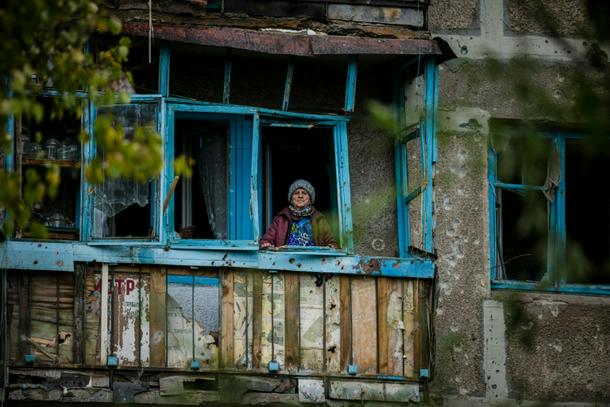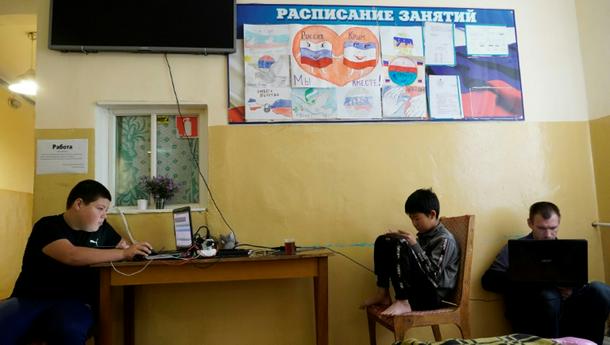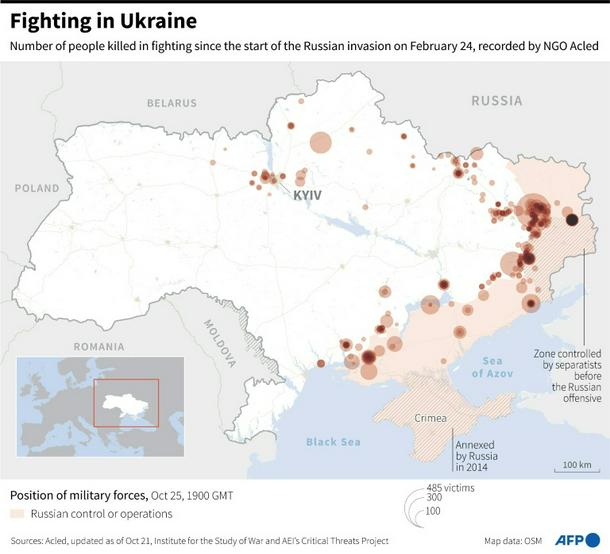
Ukraine President Volodymyr Zelensky said fighting remained intense in the eastern Donbas region near Bakhmut
Moscow (AFP) - Russia’s strategic forces carried out drills Wednesday, including a test launch of a ballistic missile from a submarine, further stoking concerns that a nuclear weapon could be deployed in the Ukraine war.
Russian President Vladimir Putin surveyed the drills carried out by his nuclear-capable forces as Moscow persisted in claiming, without offering evidence, that Kyiv was developing a “dirty bomb.”
On Monday the Russian foreign ministry posted photographs of ostensible nuclear materials on social media it said depicted “Ukraine’s capacities to create the ‘dirty bomb.’”
But on Wednesday Slovenia said the photo came from its own nuclear waste management agency and dated to 2010.
According to Dragan Barbutovski, an advisor of Slovenian Prime Minister Robert Golob, it depicted smoke detectors.
- Heavy fighting on main fronts -
Ukraine President Volodymyr Zelensky said fighting remained intense in the eastern Donbas region near Bakhmut, a town Russia’s elite Wagner troops have made a concerted push to seize.

Civilians who pulled out from the city of Kherson, which Moscow claims to have annexed, waiting in the town of Dzhankoi in the annexed Crimean peninsula
“The situation on the front line hasn’t changed significantly,” Zelensky said in his daily address to the nation. “The fiercest battles are in the Donetsk region, towards Bakhmut and Avdiyivka.”
In the main southern front, Russians were apparently fortifying their positions in Kherson city as civilians were evacuating the region.
At least 70,000 people have left their homes in Kherson province in the space of a week, a Moscow-installed official, Vladimir Saldo, told a regional TV channel.
Pro-Kremlin authorities have sought to move residents to the Russian-controlled areas on the left bank of the Dnipro river, as Ukraine troops are expected to make a bid for the main urban area on the right bank.
Saldo banned entry to the right bank area of the region for a period of seven days “due to the tense situation on the contact line.”
“The Russians do appear to be digging in to defend that region,” said Pentagon spokesman Pat Ryder on Tuesday.
- Submarine missile launch -
Western officials downplayed the Kremlin’s war games, a regular event for which Moscow gave foreign counterparts advance warning.

Ke areas of fighting in Ukraine after eight months of war
“Under the leadership of… Vladimir Putin, a training session was held with ground, sea and air strategic deterrence forces, during which practical launches of ballistic and cruise missiles took place,” the Kremlin said in a statement.
Russian state-run media ran footage of a submarine crew preparing the launch of a Sineva ballistic missile from the Barents Sea in the Arctic.
The drills also included launching test missiles from the Kamchatka peninsula in the Russian Far East.
In calls to Chinese and Indian correspondents, Russia’s Defence Minister Sergei Shoigu continued to press his allegations that Ukraine planned to detonate “dirty bomb” – a crude, small weapon filled with radioactive, biological or chemical materials – which it would blame on Russia.
Indian Defense Minister Rajnath Singh said that in his call with Shoigu, he “pointed out that the nuclear option should not be resorted to by any side as the prospect of the usage of nuclear or radiological weapons goes against the basic tenets of humanity.”
- Cultural damage studied -
Meanwhile the UN culture agency UNESCO said it is using before-and-after satellite imagery to monitor the cultural destruction inflicted by Russia’s war in Ukraine, and would make its tracking platform public soon.

UNESCO is studying the damage to cultural sites in Ukraine by the war launched by Russian in February.
UNESCO said it had verified damage to 207 cultural sites in Ukraine since the Russian invasion began on February 24, including religious sites, museums, buildings of historical and or artistic interest, monuments and libraries.
“Our conclusion is it’s bad, and it may continue to get even worse,” UNESCO’s cultural and emergencies director Krista Pikkat told reporters at a briefing in Geneva.
“Cultural heritage is very often collateral damage during wars but sometimes it’s specifically targeted as it’s the essence of the identity of countries,” said Pikkat.
Earlier this month, Zelensky requested that UNESCO add the historic port city of Odessa to its World Heritage List in a bid to protect it from Russian air strikes.
UNESCO is working with the Odessa authorities to make sure that its main monuments and cultural sites are marked with a blue shield – the emblem used during armed conflicts to denote cultural property that should be protected.